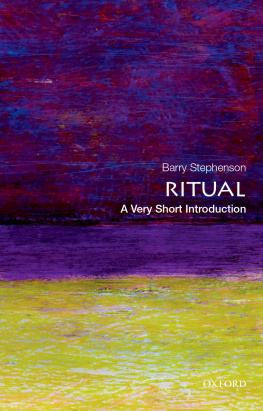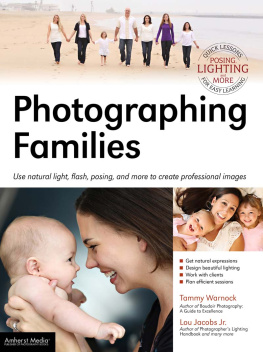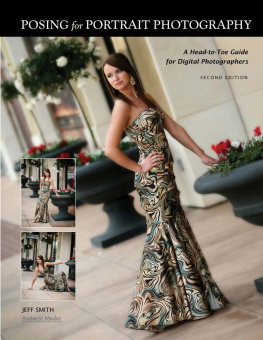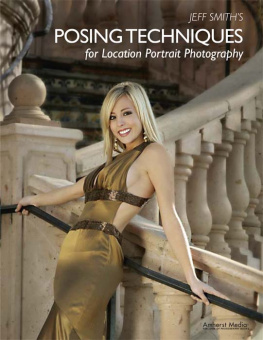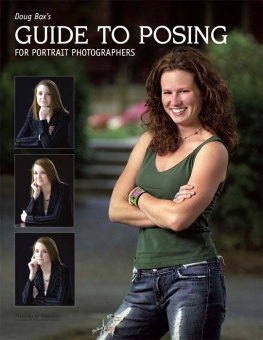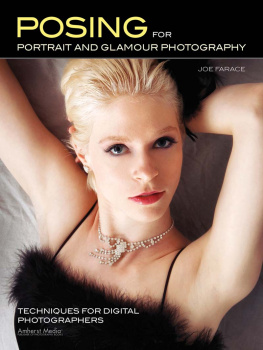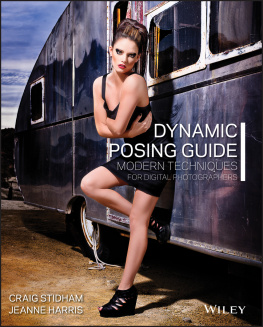

About the Author

Image by Jeff Dostelak.
Pierre Stephenson is the father of two wonderful boys, Connor and Ty. He is also a professional photographer, national speaker, and adjunct professor of photography at Madison College in Wisconsin. His diverse portfolio of work includes portraiture, wedding, commercial, and underwater photography, as well as a love for urban exploration photography. He is the owner of the multi-photographer studio Pierres Portrait Art Company and has received numerous international awards since starting in business in 1995. His work has been featured nationally in numerous magazines, including Modern Bride, Photo District News, Rangefinder, and Professional Photographer.
Pierre was born in New York City and lived in the Cayman Islands before moving to Wisconsin at the age of seven. He grew up amidst a family of two accomplished underwater photographers and mentors, Dr. Ronald and Camille Stephenson, but didnt dive into photography until his mid-twenties. His training initially started out in the studio with commercial large-format photography, then unexpectedly changed direction when he discovered his passion of portraiture and weddings, as well as working with people.
He has held seminars and workshops for professional photographers from around the world and regularly speaks around the country. He has presented at WPPI in Las Vegas four years in a row, as well as the Canadian Imaging Conference, and is a founding mentor of the nLIGHTn Tour. Visit www.PierreStephenson.com for more information on Pierres future programs.
Pierre is a PPA (Professional Photographers of America) Master Photographer and Craftsman degree holder and a PPA Certified Professional Photographer. In addition to other awards, Pierre is a two-time PPA Photographer of the Year medalist and WPPA Best of Show Wedding award winner.
Copyright 2016 by Pierre Stephenson
All rights reserved.
All photographs by the author unless otherwise noted.
Published by:
Amherst Media, Inc., P.O. Box 586, Buffalo, N.Y. 14226, Fax: 716-874-4508
www.AmherstMedia.com
Publisher: Craig Alesse
Senior Editor/Production Manager: Michelle Perkins
Editors: Barbara A. Lynch-Johnt, Harvey Goldstein, Beth Alesse
Associate Publisher: Kate Neaverth
Editorial Assistance from: Carey A. Miller, Sally Jarzab, John S. Loder
Business Manager: Adam Richards
Warehouse and Fulfillment Manager: Roger Singo
ISBN-13: 978-1-60895-946-4
Library of Congress Control Number: 2015939890
10 9 8 7 6 5 4 3 2 1
No part of this publication may be reproduced, stored, or transmitted in any form or by any means, electronic, mechanical, photocopied, recorded or otherwise, without prior written consent from the publisher.
Notice of Disclaimer: The information contained in this book is based on the authors experience and opinions. The author and publisher will not be held liable for the use or misuse of the information in this book.

www.facebook.com/AmherstMediaInc www.youtube.com/c/AmherstMedia www.twitter.com/AmherstMedia
Contents
Guide
Contents





T he art of posing can be a difficult one to master, especially given that everyone reacts differently to being directed. Some people are very instinctive and require little prompting, seeming to have their own natural posture that just works. Others need a little more help.
It is the mark of a good photographer to be able to recognize and walk that fine line between making your subject look their best and losing the person behind the pose. The best are not only masters of posing, but of people. The more comfortable you can make someone, the more they forget they are in front of your camera, and the more you will be able to achieve. Its not just about getting someone into the perfect pose that flatters, but doing so in a way that you dont lose them.
The modern world of photojournalism, fashion, and lifestyle photography has added a whole new approach to photography. The raw energy and realism of the unadulterated moment has been the driving force for the photojournalist approach and the trend for the last decade. Photojournalism has altered the styles of almost every area of photography. That said, the foundational skills of posing still have an application even in the candid, spontaneous realms. Posing is not just a skill for the portrait photographer. The best photojournalists in the world know how to pose and light. Even if they never lay a hand on their subject or alter the moment, they have mastered the art of using both skills in the candid arena.
At its most basic, posing is meant to portray your subject in a certain way. Typically, the goal is to accentuate the positive features and diminish the negativesthough, at times, the purpose, mood, or tone of the image may call for exactly the opposite to be true. Most often, we are trying to flatter our subject and we use our posing skills to do so by controlling what we show relative to the cameras perspective and our surroundings. In essence, we are attempting to trick the viewer into seeing only what we want them to see. Through the use of composition and body language, we provide added meaning, energy, and flow to an image.
Regardless of the style or approach you prefer, knowledge of the foundations of posing can only improve how you work. This book will provide you with a complete guide that combines the art and science of posing with the fundamentals of composition and the hidden message of body language. Its time to stop simply memorizing poses and start understanding them.
P osing and lighting go hand in hand in molding the photographers vision. Understanding the basics of how light controls mood and what you choose to tell the viewer about your subject is a fine dance between your lighting, posing, and other elements. This book is not meant to be an in-depth study of light from either a portrait or commercial standpoint. However, the importance of matching your pose to the light quality and playing to the light cannot be overstated. Too often, photographers with a great idea try to make something work in light that doesnt match the attitude or purpose of the image they envision. The pose not only needs to be well executed but also take into consideration the direction and characteristics of the light, and how it sculpts the face, body, and clothing of your subject.
Next page



